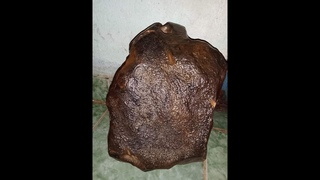How To Program Leg Extensions Safely After ACL Rescontruction (3 Phases)
💪 Get our Knee Resilience program here:
Learn how to program leg extensions after an ACL reconstruction!
💪 PROGRAMS:
📩 MAILING LIST (exclusive deals, offers, and information):
🏆 COACHING:
📝 ARTICLES:
👕 APPAREL:
🎧 PODCAST:
AFFILIATES:
👟 Vivo Barefoot: Get 15% off all shoes! -
📓 MASS (Monthly Research Review):
📚 CSMi:
🏋️ GYM EQUIPMENT:
Follow Us:
YOUTUBE: @e3rehab?sub_confirmation=1
INSTAGRAM:
TWITTER:
FACEBOOK:
TIKTOK: @e3rehab
Introduction (0:00)
Are Leg Extensions Safe After ACL Reconstruction?
Are Leg Extensions Functional?
Straight Leg Raises & Quad Sets (0:26)
Disclaimer (0:49)
Always consult with your physical therapist and surgeon prior to initiating any new exercises! Also, these phases are meant to be a guideline, not hard and fast rules!
Phase 1 (1:14)
Time frame: 0-4 weeks (approximately!)
Exercise: Isometric leg extensions performed between 60-90 degrees of knee flexion.
Research: Smidt 1973 demonstrated isometric knee extension is strongest between 45-75 degrees of knee flexion and Beynnon 1995 demonstrated that there’s no strain on the ACL at 60 or 90 degrees of isometric knee extension at 80% intensity
Parameters: For the non-surgical limb, continue to train it hard through a full range of motion to minimize atrophy and deconditioning. For the surgical limb, dosage is extremely variable. It’s largely based on tolerance. Sample 1: 2-3 sets of 10-20 repetitions for 1-2 second holds at 40-60% intensity every other day. Sample 2: 3-5 sets of 20-30 second holds at 30-50% intensity every day.
Key Points: 7/10 RPE or less, no increase in swelling, no increase in baseline pain
Phase 2 (3:12)
Time frame: 4-12 weeks (approximately!)
Exercise: Isometric leg extensions and restricted range of motion (40-90 degrees)
Research: Mikkelsen 2000, Isberg 2006, Heijne 2007, Fukuda 2013
Parameters: Keep training the non-surgical limb! For the surgical limb, ramp up the intensity of the isometrics. The reduced range of motion can be trained using hypertrophy parameters such as 3-5 sets of 10-15 repetitions every other day around that 7/10 RPE. Once again, this is extremely variable based on tolerance and swelling.
Phase 3 (4:03)
Time frame: 12 weeks (approximately!)
Exercise: Isometric leg extensions and simultaneously progressing toward full range of motion
Research: Same as above
Parameters: Keep training the non-surgical limb! For the surgical limb, slowly ramp up the speed and intensity of the isometrics. Rate of force development is extremely important so reaching your peak intensity in a shorter time span will be important (don’t rush it, though). Additionally, you’ll be working toward full range of motion knee extensions as tolerated. Continue with your hypertrophy parameters at sufficient intensity. The goal is that both quads are even stronger than they were prior to the initial ACL injury.
Summary (4:34)
You don’t have to be fearful of leg extensions if you understand the research. Progress gradually just like you would with any other exercise after a surgery or injury while respecting pain, swelling, tissue healing timelines, etc.
Outro (5:18)
We also have a blog on the topic written by Nicole Surdyka, DPT, CSCS that you find here:
-----
Disclaimer: The information presented is not intended as medical advice or to be a substitute for medical counseling but intended for entertainment purposes only. If you are experiencing pain, please seek the appropriate healthcare professional.
-----
References


















![Data Engineer Career Path by Zero to Mastery Academy [Use Coupon Code]](https://sun9-34.userapi.com/sCRZgqaAmdI_A-cscGgc18U73Dik8kRt_TJ-mg/hm9pm4OLIxM.jpg)




